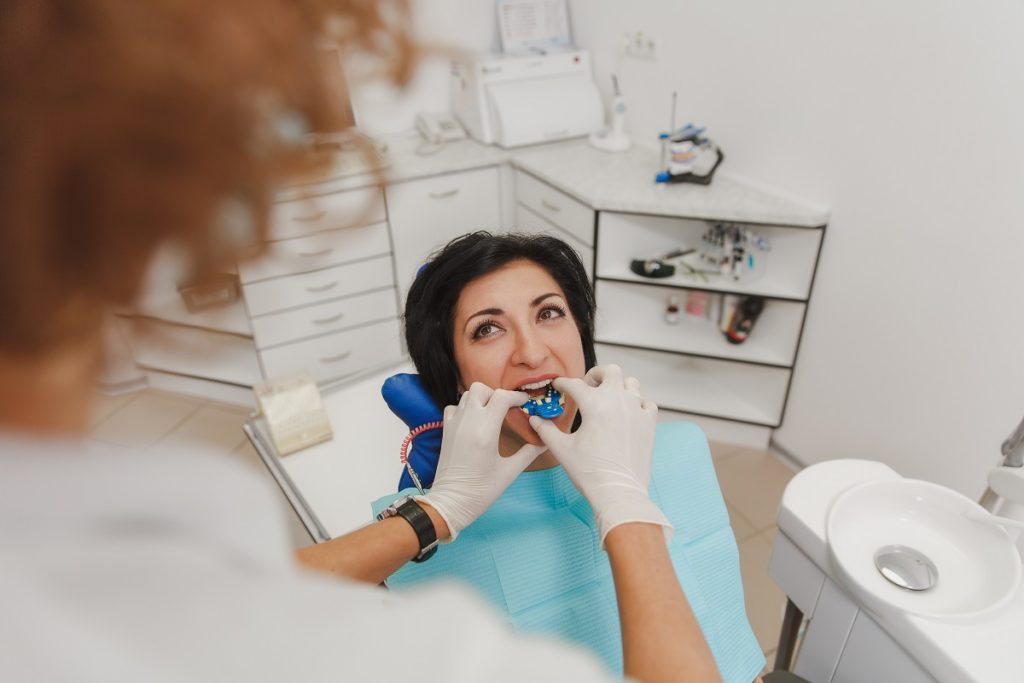
All of us have dental plaque. Bacteria in the mouth produce this film when combined with sugary or starchy foods. Flossing and brushing eliminate plaque. Plaque hardens into tartar/calculus if it is not removed. In addition to decay and gum disease, plaque can result in tooth loss. Restorative dentistry and professional cleanings prevent such tooth decay and gum disease.
What is plaque?
An accumulation of microbes known as plaque builds up constantly on teeth. Upon consuming food or drinks, these microbes produce acids that damage teeth. These acids can result in gingivitis, periodontitis (gum disease), and can destroy tooth enamel, causing deep cavities.
Additionally, plaque can form on tooth roots under the gum line, breaking down the bones that support our teeth. Plaque left untreated can turn into tartar/calculus, which is difficult to remove. In addition to brushing and flossing daily, proper oral hygiene will eliminate plaque.
How is plaque managed or treated?
Plaque and tartar are removed with regular brushing and flossing, so oral hygiene is crucial to maintaining a healthy mouth. Dental professionals scrape plaque and tartar off the teeth as part of a dental examination. The restorative dentistry office in Chandler may also recommend:
- A sealant is applied to teeth so that plaque won’t form in the grooves located on top of the chewing surfaces.
- Drugs that increase saliva production to treat dry mouth.
- Fluoride treatment to prevent tooth decay by slowing the growth of bacteria that cause plaque. Fluoride also changes the structure of tooth enamel to be more resistant to breakdown from the acid that plaque creates.
- Antibacterial toothpaste or mouthwash (chlorhexidine).
How can I prevent plaque?
The key to reducing plaque is to take good care of your teeth and gums. Here are some tips:
- If you’re having trouble keeping food and plaque from sticking between your teeth, floss once a day with dental floss or a water flosser. Research shows flossing before brushing reduces plaque accumulation.
- The two minutes of brushing should be done with fluoride toothpaste and a soft-bristled toothbrush (manual or powered). You should brush two or three times each day, preferably after every meal.
- Keep your teeth clean by visiting your family’s dentistry practice in Chandler twice a year.
What to Expect from Dental Cleaning?
The dentist will begin the dental cleaning by inspecting all areas of the mouth. Tartar build-up is one of the things that the dentist looks for when checking the teeth and gums with a mirror. The dentist will use a scaler to remove tartar from the teeth. There are two types of scalers: those that have hooks on end and those that have no hooks. Both are used to remove tartar above and below the gumline. Tartar accumulation on a particular spot can require a longer time for the dentist to scrape. In cases of excessive tartar, they may also recommend a deep cleaning combined with root-planning as part of Your comprehensive care.
The only way to remove tartar from your teeth is by a dental professional. For more information on our restorative dental services, please visit Peace of Mind Dental Studio in Chandler. Our dental professionals can remove plaque and tartar, preventing further damage to your teeth.


